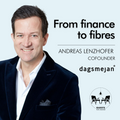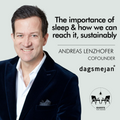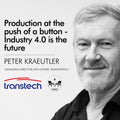Strike A Pose: Self-expression, Empowerment and Voguing
Flipping through the pages of Vogue magazine, you may admire the perfect lines or peculiar poses of the photographed models. So striking, in fact, that these poses have even been a source of inspiration behind the dance phenomenon that is Voguing.
With the likes of Madonna’s hit music video Vogue, the 1990’s Paris Is Burning documentary, and TV shows such as RuPaul’s Drag Race and Pose, pop culture has helped put Voguing in the spotlight over the years.
But while “Come on, vogue, let your body move to the music” may be a familiar tune, you may not know the history behind the dance - a form of self-expression and identity for the queer community.
Voguing: a tool of empowerment
for LGBTQI+ communities
Photo from Vogue France
Much like other forms of pride and resistance in the era, Voguing originated in New York in the 1980s. The dance form was created by the black and Latino queer communities of Harlem. Voguing emerged from the “Ballroom Culture” of ballroom houses within these communities. These houses, acting as a safe space for individuals of all gender identities and sexualities, competed against each other in balls. Acting as a chosen family, the houses became integral to the young black and Latino queer men whos’ lives were often otherwise socially marginalized. Houses were typically named after Milan and Paris fashion houses, such as House of Balenciaga, and members would usually take the house name as their surname, such as Asia Balenciaga.
Competitions saw houses mimicking the fashion runway through theatre performance and dance.
Much like other forms of pride and resistance in the era, Vouging originated in New York in the 1980s. The dance form was created by the black and Latino queer communities of Harlem. Voguing emerged from the “Ballroom Culture” of ballroom houses within these communities. These houses, acting as a safe space for individuals of all gender identities and sexualities, competed against each other in balls. Acting as a chosen family, the houses became integral to the young black and Latino queer men whos’ lives were often otherwise socially marginalized. Houses were typically named after Milan and Paris fashion houses, such as House of Balenciaga, and members would usually take the house name as their surname, such as Asia Balenciaga.
Competitions saw houses mimicking the fashion runway through theatre performance and dance.
Photo from Vogue France
Photo from Vogue France
Much like other forms of pride and resistance in the era, Vouging originated in New York in the 1980s. The dance form was created by the black and Latino queer communities of Harlem. Voguing emerged from the “Ballroom Culture” of ballroom houses within these communities. These houses, acting as a safe space for individuals of all gender identities and sexualities, competed against each other in balls. Acting as a chosen family, the houses became integral to the young black and Latino queer men whos’ lives were often otherwise socially marginalized. Houses were typically named after Milan and Paris fashion houses, such as House of Balenciaga, and members would usually take the house name as their surname, such as Asia Balenciaga.
Competitions saw houses mimicking the fashion runway through theatre performance and dance.
Along with Vogue magazine models, ancient Egyptian Hieroglyphs also served as a source of inspiration for the style of dance. Moving from one static position to the next using angular arm and leg movements characterizes the dance form, with the appearance being the dancer striking a series of poses as if they were modeling for a photoshoot or flicking through the pages of Vogue.
Another characteristic of Voguing competitions was that of “throwing shade” at one another. The judges and the audience were impressed by competitors incorporating subtle insults into their routine. The winner of the battle was usually the contestant who ‘threw the best shade’.
Image by Vogue Australia
The Evolution of Voguing Dance Styles
Over time, there has been an evolution and resurgence of Voguing as a dance form.
The Old Way of Voguing, that of the pre-1990 era, had a focus on static poses, solid lines and sharp angles. The evolution of Voguing into the New Way, post-1990, saw the transition towards flexible and fluid movements. Moves such as the duckwalk, the catwalk, spins and dips were introduced in this period.
Image from SugaTiFashion
Today, Voguing emphasizes rigid movements.
The style of Vogue Femme incorporates dramatic movements and features highly feminine poses.
THE GUESTLIST’S Linus Leonardsson & Voguing
THE GUESTLIST’s Young Talent Collaboration envisions change in the fashion industry. Linus pushes for a fully sustainable fashion industry and it is in this way that his values align with those of THE GUESTLIST. By creating garments of the highest quality that will last a lifetime and can be revived at THE GUESTLIST’S Cashmere Spa, he is contributing towards a more sustainable, and circular, future.
At the photoshoot for his collection with THE GUESTLIST, dancers from House of Milan featured as models. Striking poses complimented the juxtaposed integration of the established nuances with the Rave New World pieces.
Nuria, a member of the House of Milan, shares that the name “Milan” was an idea that originated from the late Eric Christian Bazaar who was an iconic commentator in the underground ballroom scene. Yet, it wasn’t until 1989 that the House of Milan made an official debuted at a ball given by Pepper Labeija at Traxx in NYC. Melsun Milan (Legendary Thug Realness) was the Father of the House. With more than 100 members globally, the integrity, style, class, and sophistication upon which the house was founded have become the main pillars unifying the dancers.
For Nuria, dance is a space in which she is able to explore different sides of herself - going so far as to even integrate the physical with the spiritual. “Belonging to this community for almost 8 years now gives me pride for what we, and the people before us, have created and fought for and how vogue became a lifestyle for me - not only a dance. It carries a political message - and we are still fighting to make this world a safer space for especially POC and LGBTQ people. Voguing, for me, means to honour each part of myself through the dance and the expression. It is like a prayer or physical mantra which creates self-esteem and acceptance.”
Another change Linus aims for within the fashion industry is the removal of gender expectations. His collection with THE GUESTLIST consists of gender non-conforming designs. Interpreting gender as a concept is something that Linus shares with the ideology behind Voguing. When creating his fashion film featuring his collection from THE GUESTLIST it then came naturally to feature Vogue dancers. In this way, his designs speak volumes for self-expression, just as the dancers do so through Voguing.







